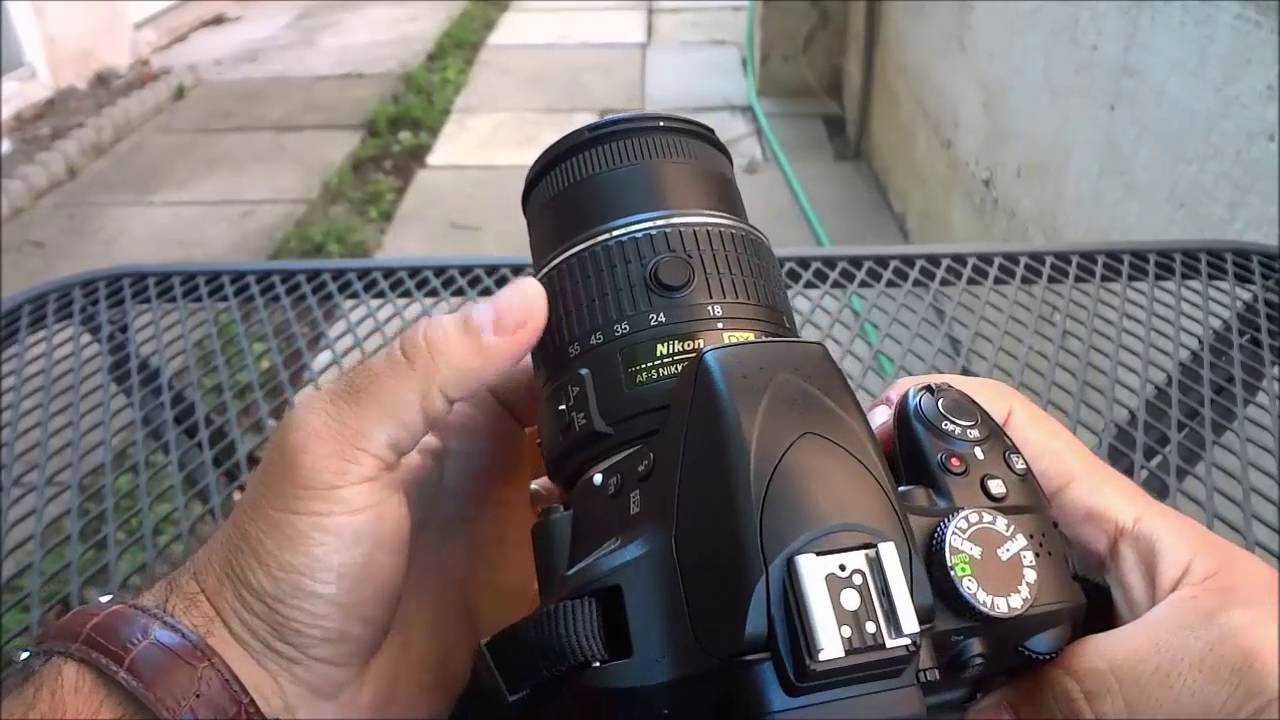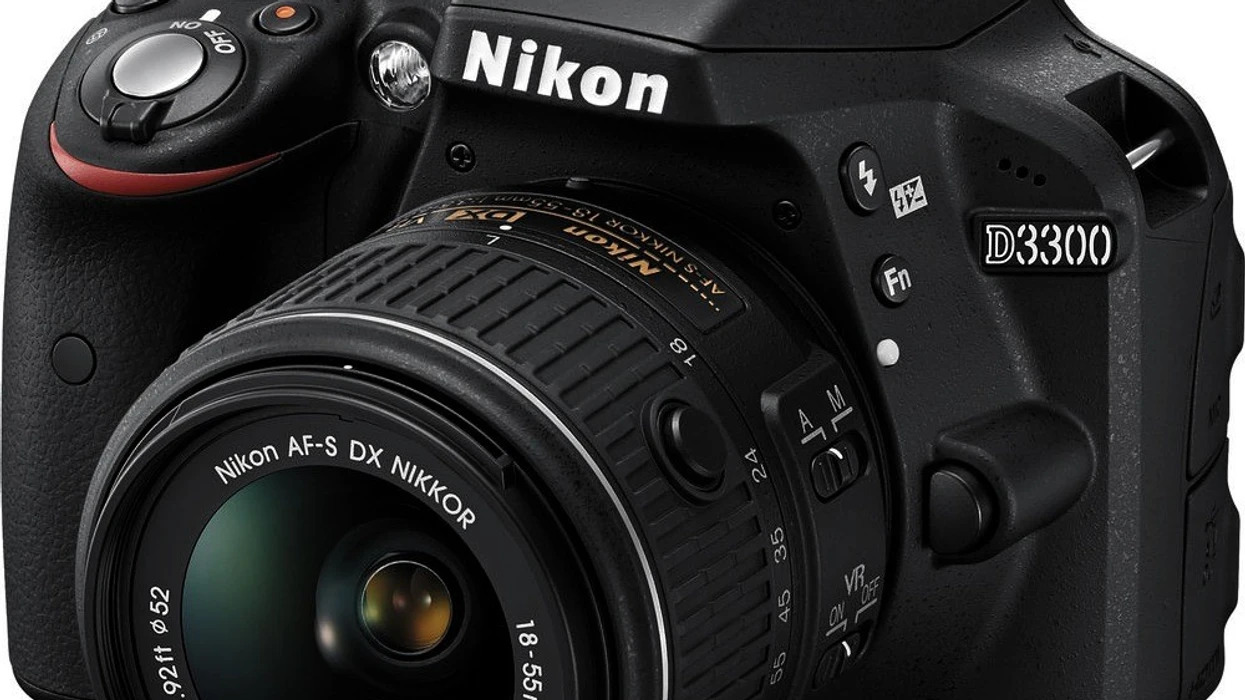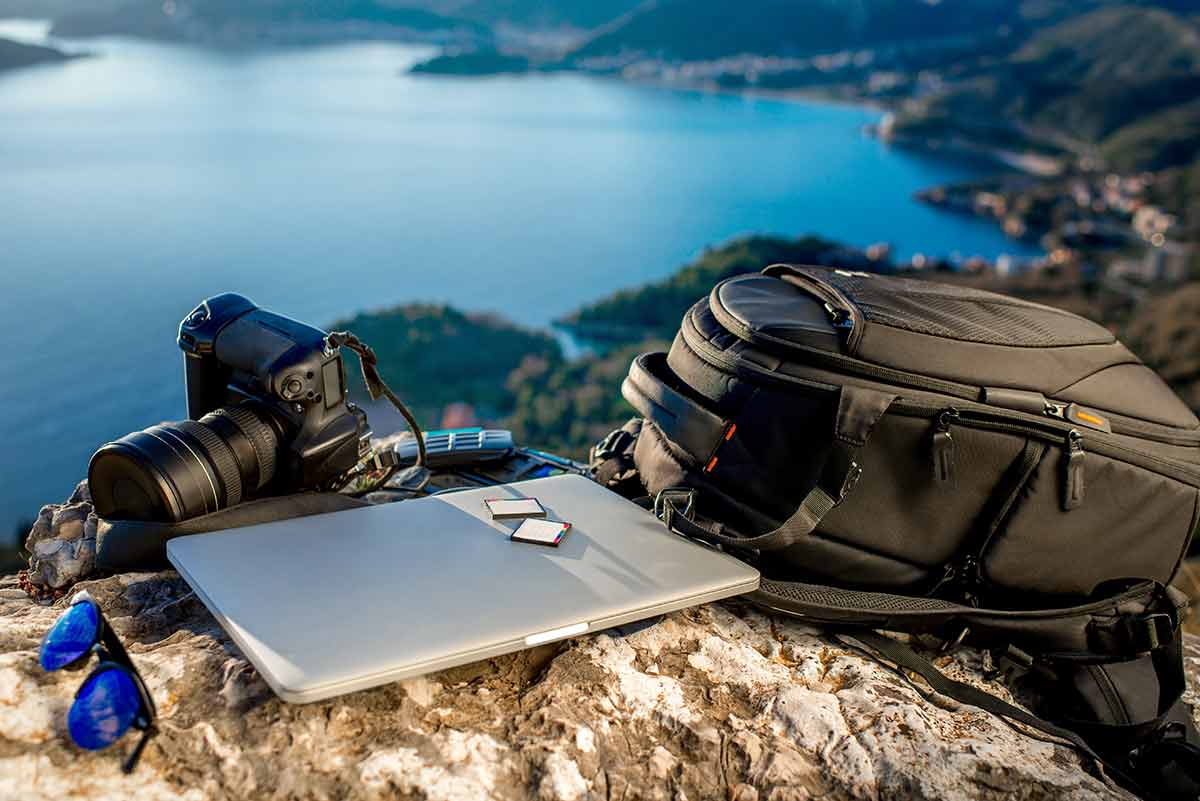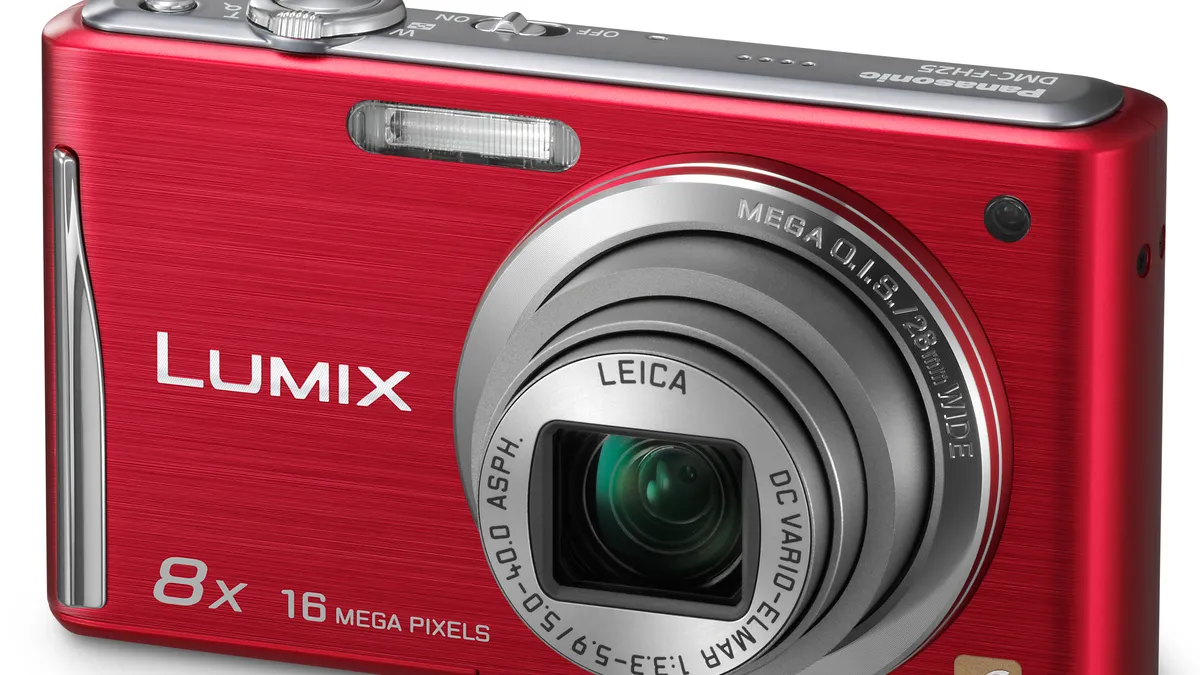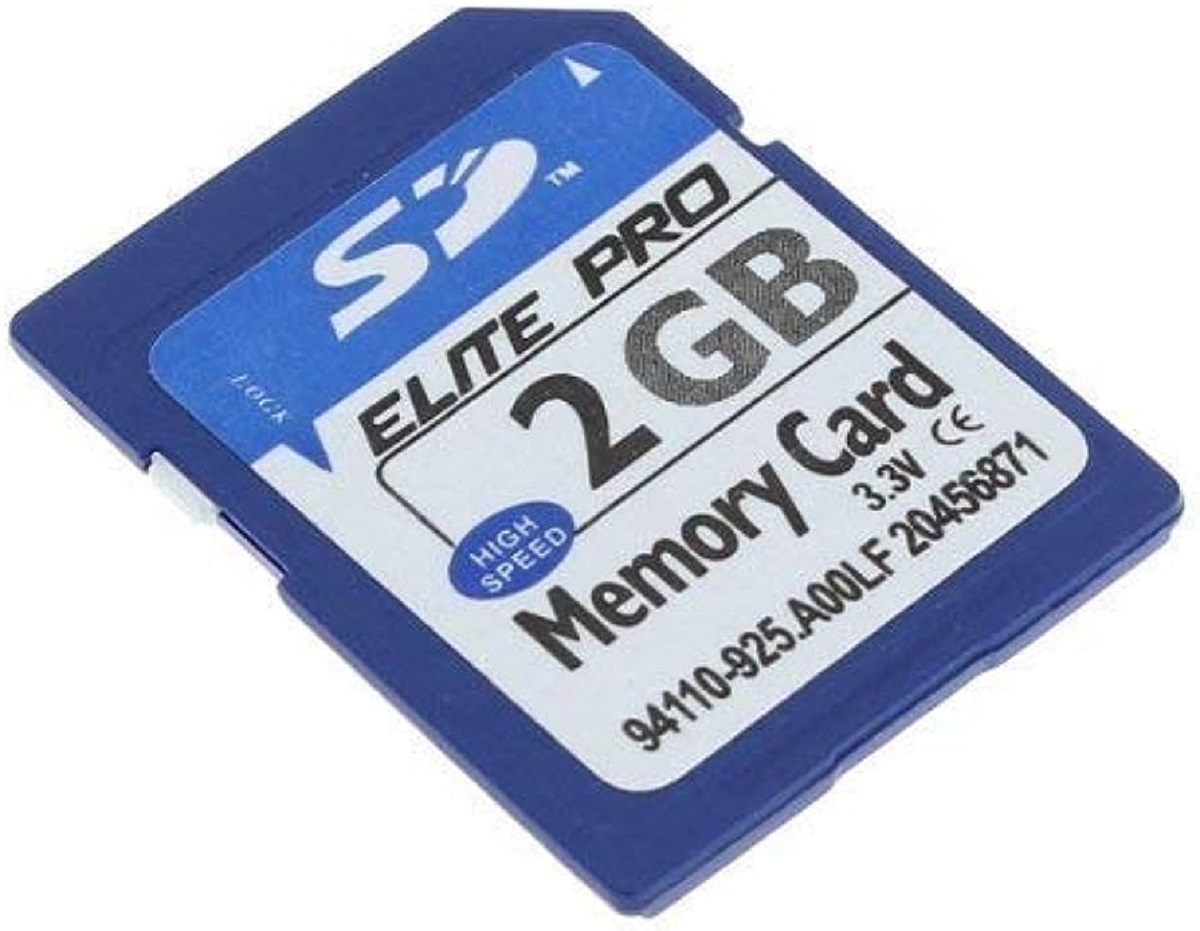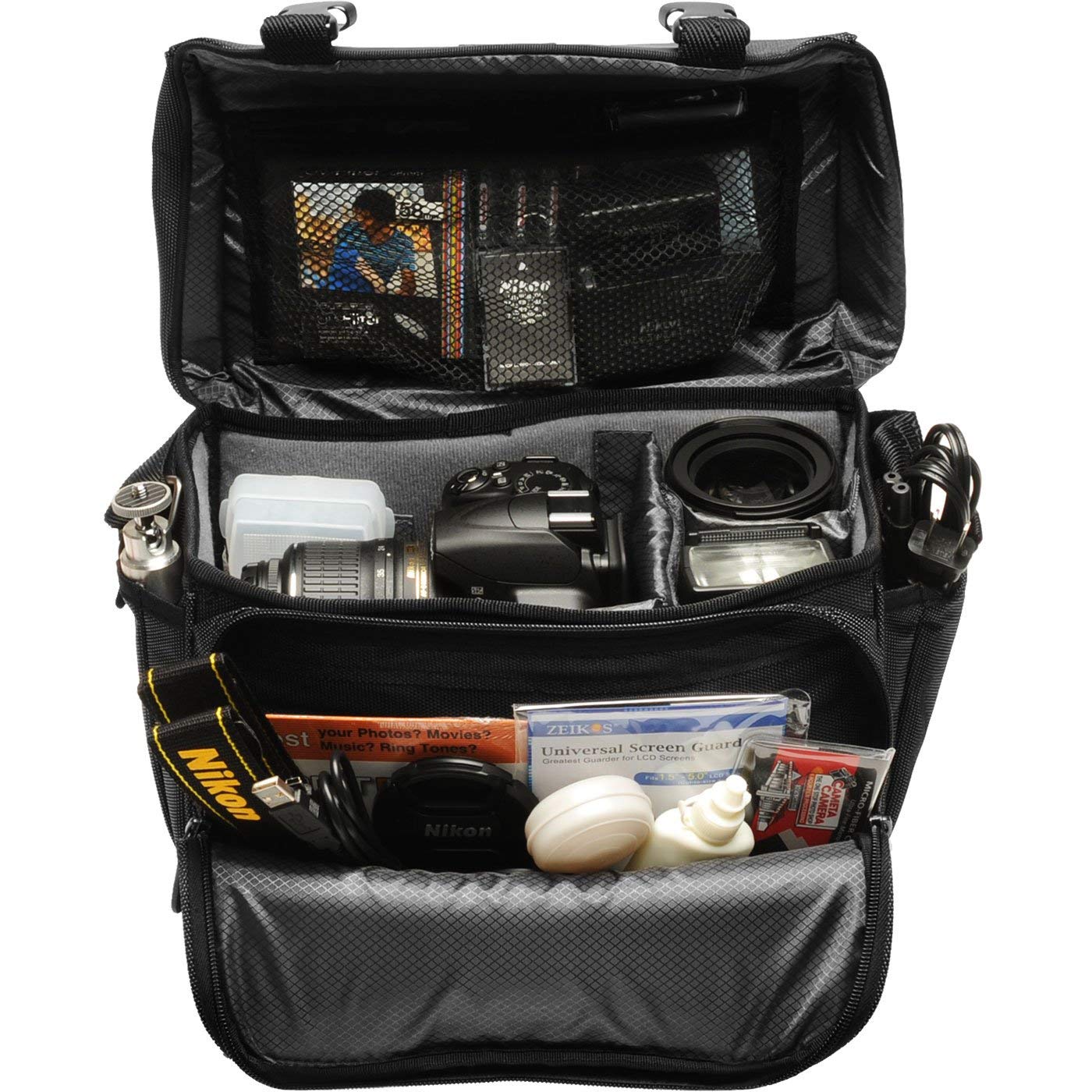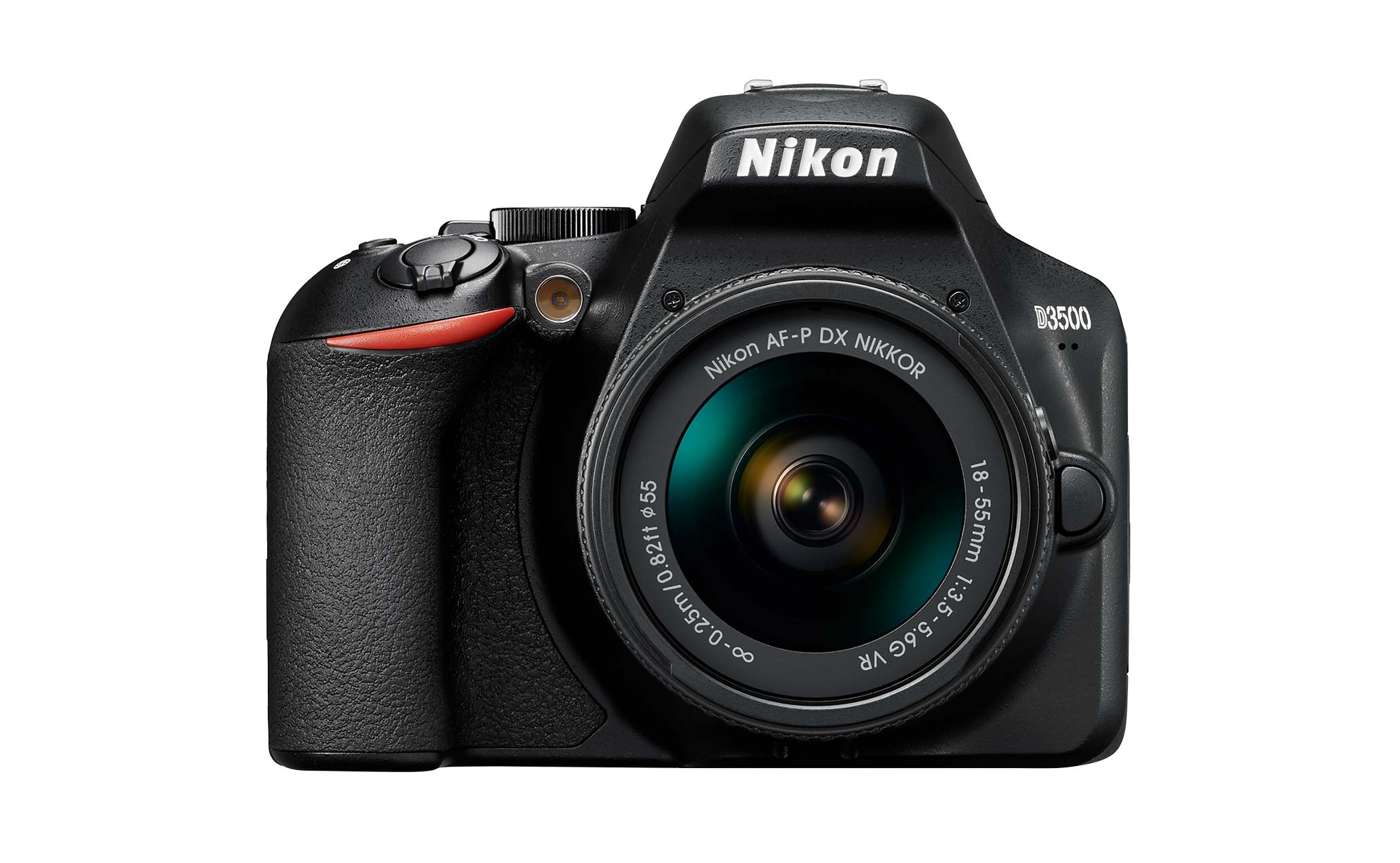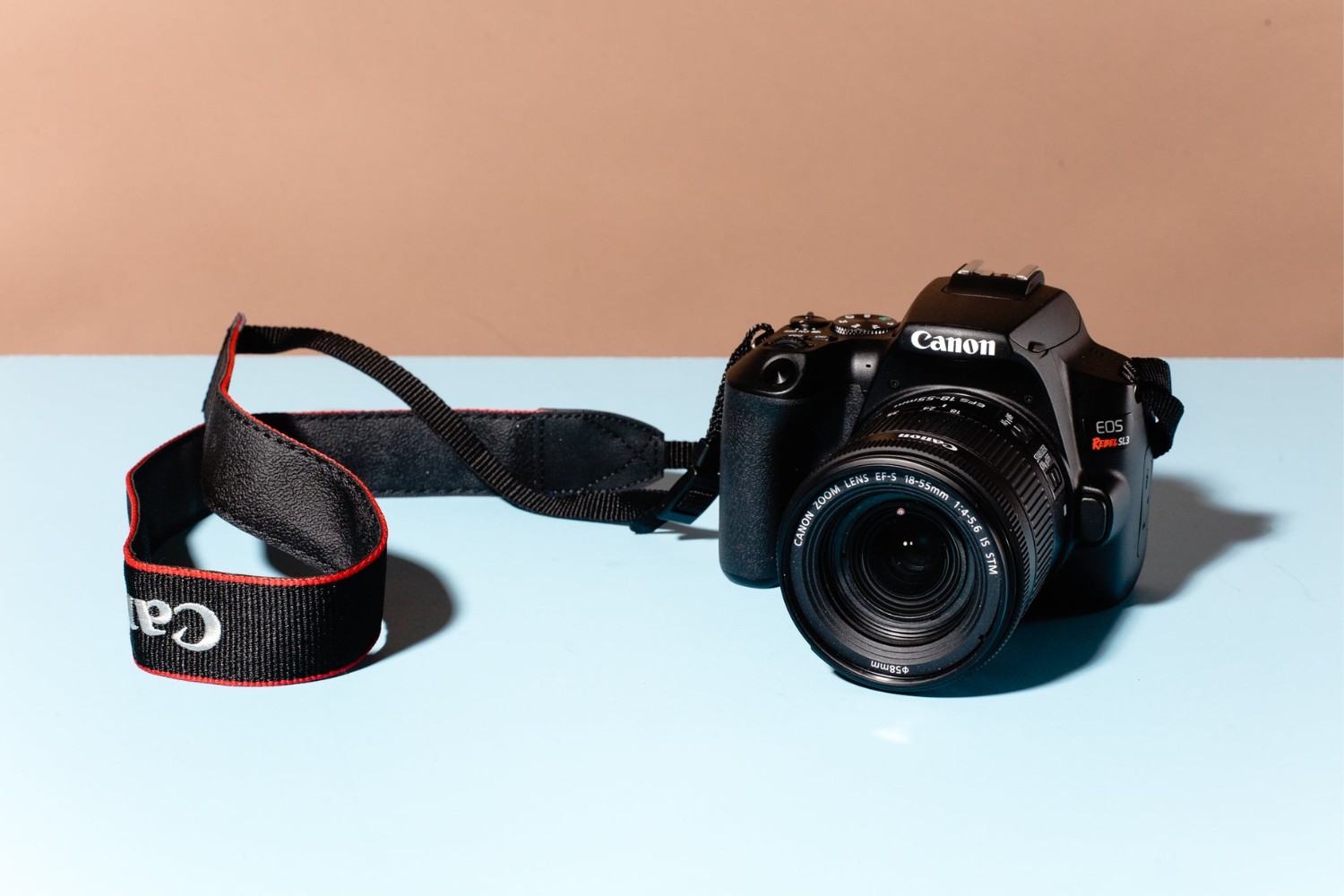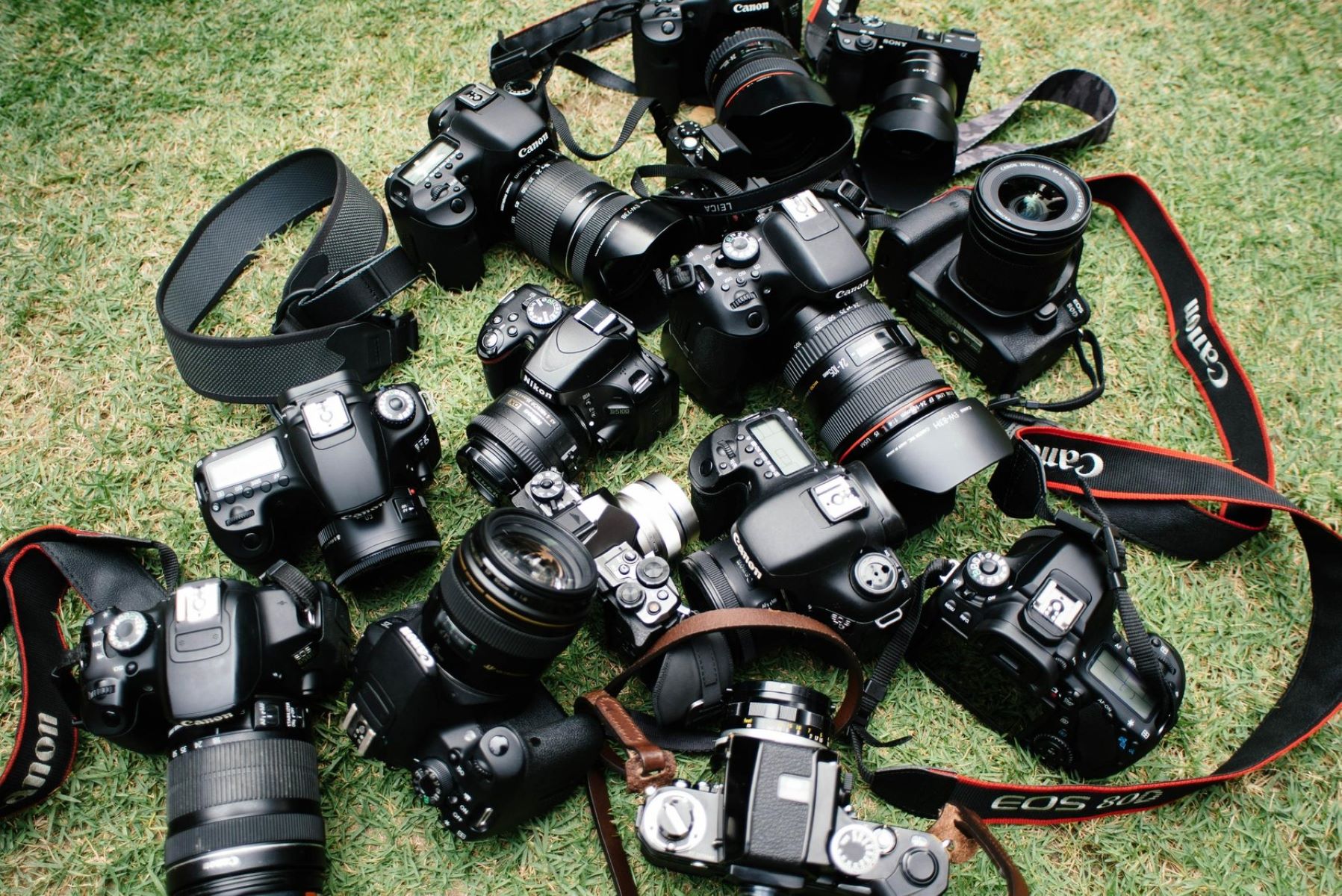Introduction
Welcome to the exciting world of photography with the Nikon D3300 DSLR camera! Whether you're a novice photographer venturing into the realm of DSLRs or an experienced shooter looking to harness the full potential of this powerful device, this guide is tailored to help you kickstart your journey with the D3300. With its user-friendly interface and impressive features, the D3300 is an excellent choice for capturing stunning images and delving into the art of photography.
In this comprehensive guide, we'll walk you through the essential steps to maximize the capabilities of your D3300 DSLR camera. From understanding the basic functionalities to mastering advanced techniques, you'll gain valuable insights that will elevate your photography skills to new heights. Whether you're capturing breathtaking landscapes, immortalizing precious moments, or experimenting with creative compositions, the D3300 is a versatile tool that empowers you to unleash your artistic vision.
As we embark on this enlightening journey, you'll discover the intricacies of setting up your D3300, navigating through its various modes, and unraveling the mysteries of exposure, focus, and white balance. Additionally, we'll delve into the realm of lenses, offering guidance on selecting the right optics to suit your photographic endeavors. Along the way, we'll provide valuable tips and techniques that will enable you to capture compelling images with confidence and finesse.
The D3300 is not just a camera; it's a gateway to a world of boundless creativity and visual storytelling. Whether you're passionate about capturing the essence of life or simply seeking to immortalize cherished memories, the D3300 is your faithful companion on this exhilarating photographic odyssey. So, grab your camera, and let's embark on this enriching adventure together. By the end of this guide, you'll be equipped with the knowledge and skills to harness the full potential of your D3300 DSLR camera, unleashing your innate creativity and capturing moments that resonate with depth and emotion.
Getting to Know Your D3300 DSLR Camera
Before delving into the technical aspects of photography with the Nikon D3300, it’s essential to familiarize yourself with the physical and operational features of this impressive DSLR. The D3300 boasts a compact and lightweight design, making it highly portable and ideal for on-the-go shooting. Its ergonomic grip ensures comfortable handling, allowing you to capture images for extended periods without discomfort.
The camera’s intuitive control layout provides easy access to essential functions, including the shutter release, mode dial, and command dial, enabling seamless adjustments while framing your shots. The rear LCD screen offers a crisp and clear display for reviewing images, navigating menus, and accessing various settings. Understanding the purpose and functionality of each button, dial, and interface element is crucial for efficiently operating the D3300 and maximizing its potential.
Furthermore, acquainting yourself with the camera’s connectivity options, such as the USB and HDMI ports, allows for convenient file transfer and seamless integration with external devices. The D3300’s compatibility with Wi-Fi adapters opens up possibilities for wireless image transfer and remote camera control, enhancing your shooting experience and workflow.
Exploring the D3300’s built-in flash capabilities and hot shoe for external flash attachment broadens your understanding of lighting options, empowering you to experiment with different lighting techniques and achieve optimal exposure in various shooting conditions. Additionally, familiarizing yourself with the battery and memory card compartments ensures efficient management of power and storage, preventing interruptions during your photographic endeavors.
As you delve deeper into the intricacies of your D3300 DSLR camera, you’ll develop a profound appreciation for its robust construction, user-friendly interface, and versatile features. By mastering the physical and operational aspects of the D3300, you’ll lay a solid foundation for harnessing its imaging capabilities and unleashing your creative potential.
Setting Up Your D3300 DSLR Camera
Setting up your Nikon D3300 DSLR camera for optimal performance involves a series of essential steps that ensure seamless operation and the ability to capture stunning images. The initial setup process encompasses configuring fundamental settings, preparing the camera for use, and customizing preferences to align with your specific shooting requirements.
Upon unboxing your D3300, the first step is to insert a fully charged battery and a compatible memory card, ensuring that you have ample power and storage capacity for your photographic endeavors. Familiarize yourself with the battery charging process and the insertion and removal of the memory card, as these routine tasks are integral to maintaining uninterrupted shooting sessions.
Next, navigate through the camera’s menu system to set the date, time, and language preferences, ensuring that your images are accurately timestamped and that the camera’s interface is displayed in your preferred language. Additionally, configuring the autofocus system to suit your shooting style and subject preferences enhances the camera’s responsiveness and accuracy when capturing images.
Customizing the shooting settings, such as image quality, file format, and ISO sensitivity, allows you to tailor the camera’s performance to meet the specific demands of your photographic projects. Understanding the implications of these settings on image quality, file size, and light sensitivity empowers you to make informed decisions based on the desired outcome of your captured images.
Exploring the playback and display options enables you to fine-tune the camera’s LCD screen settings, including brightness, grid display, and image review options, ensuring optimal visibility and functionality during image playback and menu navigation. Additionally, configuring the camera’s sound and operational settings, such as button customization and menu display, enhances the overall user experience and streamlines your interaction with the D3300.
By meticulously setting up your D3300 DSLR camera and customizing its various parameters to align with your preferences and shooting style, you lay the groundwork for a seamless and personalized photographic experience. The careful calibration of these settings ensures that your D3300 is poised to deliver exceptional imaging performance, allowing you to focus on capturing captivating moments with confidence and precision.
Choosing the Right Mode
Understanding the diverse shooting modes offered by the Nikon D3300 DSLR camera is essential for tailoring your photographic approach to different scenarios and subjects. The camera’s mode dial presents a range of options, each designed to optimize settings for specific shooting conditions and creative intentions. By familiarizing yourself with these modes, you can harness the full potential of the D3300 and elevate the visual impact of your images.
The Auto Mode serves as an ideal starting point for beginners, allowing the camera to make most of the exposure and focus decisions. This fully automatic mode is perfect for capturing quick shots without the need to adjust settings, making it well-suited for casual photography and spontaneous moments.
For enthusiasts eager to exercise more control over their images, the Programmed Auto Mode (P) offers a balance between automatic and manual adjustments. This mode allows you to adjust various settings while the camera maintains the optimal exposure, providing flexibility without overwhelming you with intricate technical decisions.
The Aperture Priority Mode (A) empowers you to control the aperture setting, influencing depth of field and the amount of light entering the lens. This mode is particularly advantageous for achieving selective focus and creating captivating portraits, as well as manipulating the visual emphasis within a scene.
Conversely, the Shutter Priority Mode (S) enables precise control over the shutter speed, allowing you to freeze fast-moving subjects or convey motion through deliberate blur. This mode is invaluable for action photography, sports, and dynamic scenes where capturing decisive moments is paramount.
For photographers seeking complete creative autonomy, the Manual Mode (M) provides full control over both aperture and shutter speed, granting the freedom to fine-tune settings according to your artistic vision. While this mode demands a deeper understanding of exposure principles, it offers unparalleled creative potential and the ability to adapt to challenging lighting conditions.
Additionally, the Scene Modes present specialized settings tailored to specific shooting scenarios, such as landscapes, portraits, and night scenes. These pre-programmed modes optimize the camera’s settings to suit the characteristics of each scene type, simplifying the process of capturing compelling images in diverse environments.
By comprehending the distinct functionalities of each shooting mode and discerning the optimal mode for various shooting scenarios, you can leverage the D3300’s versatile capabilities to achieve remarkable results. Whether you’re aiming for creative expression, technical precision, or spontaneous captures, the diverse shooting modes empower you to adapt to any photographic situation with confidence and finesse.
Understanding Exposure
Exposure is a fundamental concept in photography, encompassing the amount of light that reaches the camera’s sensor to produce a well-exposed image. Mastering exposure is crucial for achieving the desired brightness, contrast, and detail in your photographs, and the Nikon D3300 DSLR camera offers a range of tools and settings to help you achieve optimal exposure in diverse shooting conditions.
The exposure triangle forms the cornerstone of understanding and manipulating exposure, comprising three essential elements: aperture, shutter speed, and ISO sensitivity. These interconnected factors influence the amount of light that reaches the camera’s sensor, allowing you to control the exposure and achieve the desired visual outcome.
Aperture refers to the size of the lens opening and plays a pivotal role in regulating the amount of light entering the camera. A wider aperture (smaller f-number) permits more light and produces a shallow depth of field, ideal for isolating subjects and creating a blurred background, while a narrower aperture (larger f-number) reduces the light and increases the depth of field, suitable for capturing expansive landscapes and intricate details with clarity.
Shutter speed dictates the duration for which the camera’s shutter remains open, controlling the amount of light that reaches the sensor and influencing the depiction of motion in the captured scene. Faster shutter speeds freeze action and minimize motion blur, making them ideal for sports and fast-paced subjects, while slower shutter speeds introduce deliberate motion blur, conveying a sense of movement and fluidity in the image.
ISO sensitivity determines the sensor’s responsiveness to light, with higher ISO settings amplifying the sensor’s sensitivity and allowing for proper exposure in low-light conditions. However, elevated ISO levels may introduce digital noise, impacting image quality, whereas lower ISO settings preserve image clarity but necessitate longer exposure times in dimly lit environments.
The D3300’s exposure metering system evaluates the scene’s brightness and assists in determining the optimal exposure settings. Understanding the metering modes, such as matrix, center-weighted, and spot metering, enables you to gauge the scene’s luminance distribution and make informed exposure adjustments to achieve accurate and balanced exposures.
By comprehending the intricate interplay of aperture, shutter speed, and ISO sensitivity, you can manipulate these exposure parameters to convey your creative vision and capture images with precision and impact. Whether you’re striving to freeze action with razor-sharp detail or evoke a sense of ethereal motion, mastering exposure empowers you to infuse your images with visual allure and narrative depth.
Mastering Focus
Attaining sharp and precisely focused images is integral to creating visually compelling and impactful photographs. The Nikon D3300 DSLR camera provides an array of focusing tools and techniques that enable you to achieve optimal sharpness and clarity in your captured images, empowering you to master the art of focus and elevate the visual impact of your photography.
The D3300 features a versatile autofocus system that offers multiple focus modes, including single-servo autofocus (AF-S), continuous-servo autofocus (AF-C), and automatic-servo autofocus (AF-A), each tailored to specific shooting scenarios and subject movements. Understanding the nuances of these focus modes allows you to adapt to dynamic scenes, fast-moving subjects, and varying environmental conditions with precision and agility.
The autofocus points in the D3300’s viewfinder provide a visual representation of the areas in the frame where the camera is actively focusing. By selecting specific autofocus points, you can direct the camera’s focus to a precise area within the composition, ensuring that your intended subject is sharply rendered and prominently featured in the image.
For photographers seeking greater control over focus, the D3300 offers manual focus capabilities, allowing you to manually adjust the focus ring on the lens to achieve precise sharpness. This feature is particularly advantageous in situations where autofocus may struggle, such as low-light conditions or when photographing subjects with minimal contrast.
Understanding the depth of field empowers you to manipulate focus to convey artistic intent and visual impact. By controlling the aperture and focal distance, you can expand or restrict the depth of field, influencing the degree of foreground-to-background sharpness and selectively directing the viewer’s attention within the frame.
The D3300’s focus tracking functionality facilitates the seamless capture of moving subjects, allowing the camera to maintain focus on a subject as it moves within the frame. This feature is invaluable for sports, wildlife, and action photography, ensuring that your moving subjects remain consistently sharp and well-defined throughout the sequence of images.
By honing your understanding of the D3300’s focusing capabilities and techniques, you can harness the power of focus to imbue your images with captivating detail, emotional resonance, and narrative impact. Whether you’re capturing intricate macro subjects, dynamic sports scenes, or poignant portraits, mastering focus empowers you to convey your creative vision with precision and artistry.
Exploring White Balance
White balance is a critical aspect of photography that profoundly influences the color rendition and overall mood of your images. The Nikon D3300 DSLR camera offers a range of white balance settings that allow you to adjust the color temperature and achieve accurate color reproduction in various lighting conditions, ensuring that your photographs faithfully reflect the true visual characteristics of the scene.
The white balance presets on the D3300 encompass a selection of common lighting scenarios, such as daylight, cloudy, shade, tungsten, fluorescent, and flash, each tailored to neutralize the color cast inherent in specific lighting environments. By selecting the appropriate white balance preset, you can mitigate the influence of varying color temperatures and attain natural and true-to-life color representation in your images.
For photographers seeking greater precision and customization, the D3300 provides custom white balance functionality, allowing you to calibrate the camera’s white balance settings based on the specific lighting conditions of your shooting environment. This feature is particularly advantageous in mixed or challenging lighting situations, enabling you to attain accurate color reproduction tailored to the nuances of the scene.
Understanding the color temperature scale and its impact on white balance empowers you to interpret and manipulate the color characteristics of light. The scale ranges from warm (lower color temperatures, such as candlelight) to cool (higher color temperatures, such as overcast daylight), allowing you to deliberately adjust the white balance to convey specific moods and evoke emotional responses in your images.
The D3300’s white balance bracketing feature facilitates the capture of multiple images with varying white balance settings, providing flexibility in post-processing and enabling you to select the most visually appealing rendition of a scene. This feature is particularly useful in situations where the prevailing lighting conditions fluctuate or when experimenting with different color interpretations of a subject.
Furthermore, the D3300’s RAW file format preserves comprehensive color information and affords greater latitude for white balance adjustments during post-processing. This capability allows you to fine-tune the white balance of your images after they have been captured, offering enhanced flexibility and creative control over color rendition and tonal balance.
By delving into the intricacies of white balance and harnessing the versatile tools provided by the D3300, you can achieve precise and evocative color representation in your photographs, imbuing them with emotional resonance and visual allure. Whether you’re capturing vibrant landscapes, intimate portraits, or compelling still lifes, exploring white balance empowers you to infuse your images with captivating color fidelity and expressive depth.
Using Different Lenses
Expanding your photographic horizons with the Nikon D3300 DSLR camera involves exploring the diverse creative potential offered by a range of interchangeable lenses. The ability to adapt the camera to specific shooting scenarios and artistic intentions through the use of different lenses empowers you to capture images with unique perspectives, visual impact, and expressive depth.
The kit lens typically bundled with the D3300, such as the AF-S DX NIKKOR 18-55mm f/3.5-5.6G VR II, serves as a versatile starting point for a wide array of photographic genres. Its focal length range encompasses wide-angle to short telephoto, making it suitable for capturing landscapes, portraits, and everyday scenes with ease and flexibility.
For photographers seeking to delve into expansive landscapes, architecture, or immersive interior photography, wide-angle lenses offer a broader field of view, enabling you to encompass vast scenes and emphasize spatial relationships within the frame. These lenses excel in capturing sweeping vistas, environmental portraits, and dynamic urban landscapes with a sense of grandeur and scale.
Conversely, telephoto lenses extend your reach and magnify distant subjects, making them ideal for wildlife, sports, and candid photography, as well as intimate portraits that compress the perspective and isolate the subject from the background. The pronounced magnification and shallow depth of field achieved with telephoto lenses impart a compelling visual impact and evoke a sense of intimacy and isolation within the frame.
For achieving captivating close-up shots and exploring the intricate details of subjects, macro lenses offer unparalleled magnification and focusing capabilities, allowing you to capture the delicate nuances and textures of flowers, insects, and small objects with exquisite precision and visual allure.
Specialized prime lenses, characterized by a fixed focal length, deliver exceptional optical performance and low-light capabilities, making them well-suited for portraiture, street photography, and artistic expression. The inherent sharpness, shallow depth of field, and superior light-gathering capabilities of prime lenses enable you to craft images with striking clarity and emotive resonance.
Understanding the unique characteristics and applications of different lenses empowers you to tailor your photographic vision to specific subjects, environments, and creative aspirations. By embracing the versatility of the D3300’s interchangeable lens system, you can expand your expressive range, capture diverse visual narratives, and infuse your images with distinctive perspectives and emotional depth.
Tips for Better Photography
Enhancing your photographic prowess with the Nikon D3300 DSLR camera entails embracing a blend of technical proficiency, artistic insight, and creative finesse. By integrating the following tips into your photographic practice, you can elevate the visual impact and emotive resonance of your images, capturing moments with precision, depth, and compelling storytelling.
- Master Your Camera: Delve into the intricacies of your D3300, familiarizing yourself with its features, settings, and operational nuances. Understanding the capabilities of your camera empowers you to make informed decisions and adapt to diverse shooting scenarios with confidence.
- Embrace Natural Light: Leverage the nuances of natural light to imbue your images with warmth, depth, and evocative ambiance. Pay attention to the quality, direction, and intensity of light, using it to sculpt your subjects and create captivating visual narratives.
- Explore Composition: Experiment with diverse compositional techniques, such as the rule of thirds, leading lines, and negative space, to imbue your images with balance, dynamism, and visual intrigue. Embrace unconventional perspectives and framing to convey unique narratives and evoke emotional responses.
- Focus on Storytelling: Infuse your images with narrative depth and emotional resonance, capturing moments that resonate with authenticity and human connection. Seek out compelling subjects, candid moments, and evocative details that convey a sense of intimacy and visual storytelling.
- Experiment with Depth of Field: Manipulate aperture settings to control the depth of field, directing the viewer’s attention and conveying visual emphasis within the frame. Explore the interplay of foreground and background elements to create images with dimension and visual allure.
- Embrace Post-Processing: Utilize post-processing tools to refine and enhance your images, adjusting exposure, contrast, and color to realize your creative vision. Exercise restraint and intentionality, ensuring that post-processing complements and elevates the inherent qualities of your photographs.
- Seek Feedback and Inspiration: Engage with the photography community, seek constructive feedback, and draw inspiration from diverse sources. Embrace continuous learning and artistic growth, allowing the perspectives of others to enrich your creative journey.
- Cultivate Patience and Perseverance: Embrace the ebb and flow of the creative process, allowing yourself the space to experiment, learn from mistakes, and persist in refining your craft. Patience and perseverance are essential virtues in the pursuit of photographic excellence.
By integrating these tips into your photographic approach, you can embark on a journey of artistic exploration and visual storytelling, capturing images that resonate with depth, emotion, and enduring impact. Embrace the inherent potential of the D3300 as a tool for creative expression, and allow your unique perspective and artistic sensibility to shine through in every photograph you create.
Conclusion
Congratulations on embarking on this enriching journey to unlock the full potential of your Nikon D3300 DSLR camera. Throughout this comprehensive guide, we’ve delved into the essential facets of photography, from mastering the technical intricacies of your camera to embracing the artistry and storytelling inherent in capturing compelling images.
By acquainting yourself with the physical and operational features of the D3300, understanding exposure principles, and exploring the diverse creative possibilities offered by different lenses, you’ve laid a solid foundation for elevating your photographic skills and harnessing the expressive range of this remarkable camera.
As you navigate through the intricacies of white balance, focus, and composition, you’ve gained valuable insights and techniques that will empower you to infuse your images with emotional resonance, visual allure, and narrative depth. Embracing natural light, exploring diverse compositional approaches, and honing your post-processing skills are integral steps in realizing your creative vision and capturing moments with enduring impact.
Photography is a journey of discovery, artistic expression, and continuous growth. As you apply the tips and techniques outlined in this guide to your photographic practice, remember to embrace experimentation, seek inspiration from the world around you, and allow your unique perspective to shine through in every image you create.
With the Nikon D3300 as your faithful companion, you possess a powerful tool for visual storytelling and creative exploration. Whether you’re capturing the grandeur of landscapes, the intimacy of portraits, or the spontaneity of everyday moments, the D3300 empowers you to immortalize the beauty and depth of life through the art of photography.
As you venture forth on your photographic odyssey, remember that each image you create is a testament to your unique vision, creativity, and emotional connection to the world. Embrace the process, cultivate your artistic sensibility, and allow your passion for photography to illuminate every frame you capture.







